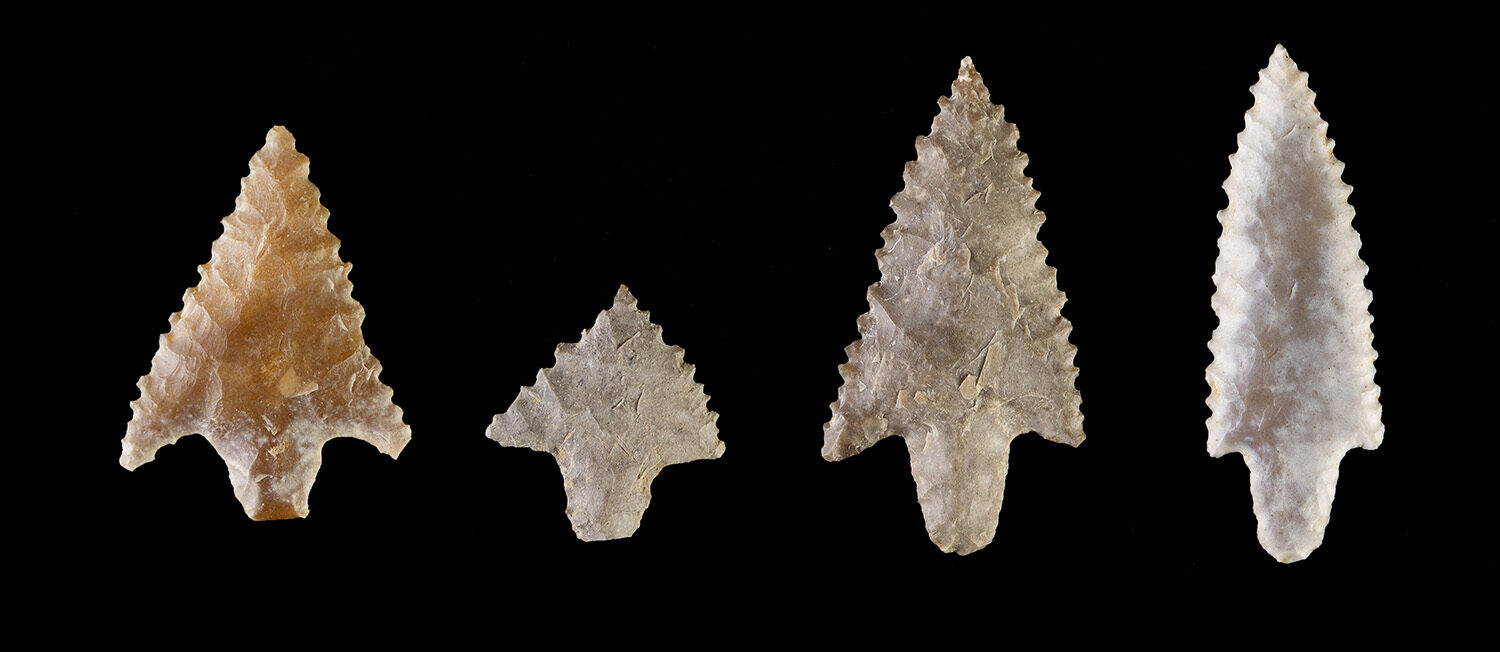
Flint
4.500-3.300 BC
Camp d'en Galí (Vilaür - Alt Empordà)
In August 1973, construction work on the section of motorway between Girona and Figueres uncovered human bones, fragments of pottery and flint objects in the so-called Camp d’en Galí in Vilaür. A small emergency excavation completed the documentation of the find.
An almost complete skull, seven arrowheads, a knife and a fragment of another (all made of flint), two pottery vessels and a small serpentine axe showed that the roadbuilders had damaged a so-called “pit grave”. In Catalonia these are characteristic of the Middle Neolithic. The structure of the tomb had been lost, but it was possible to recover part of the buried individual and practically all the grave goods that accompanied them.
These arrowheads are of the so-called “fin and peduncle” type and feature a meticulous carving technique that resulted in objects that were not only very efficient in terms of the function they had to fulfil, but also of great beauty.
Today’s large public projects have accustomed us to seeing teams of archaeologists following the work and preceding them with preventive excavations that guarantee the documentation of the sites that are about to be destroyed. In 1973, however, a very small number of people documented the large cut of land caused by the roadbuilding.
The damaged Camp d’en Galí grave in Vilaür therefore has its place in the brief history of Girona archaeology. The motorway building campaign of 1973-1974 was the first comprehensive monitoring of a major public works project in our country.
